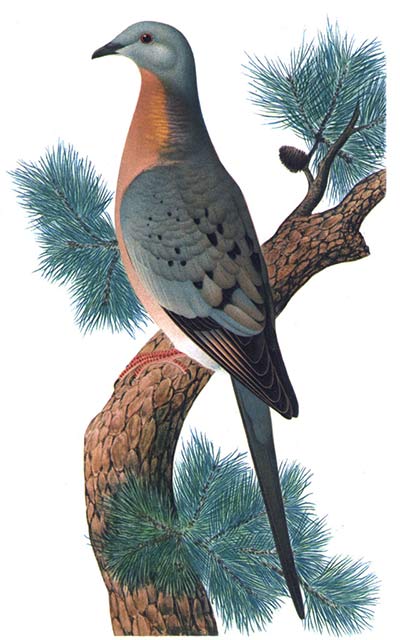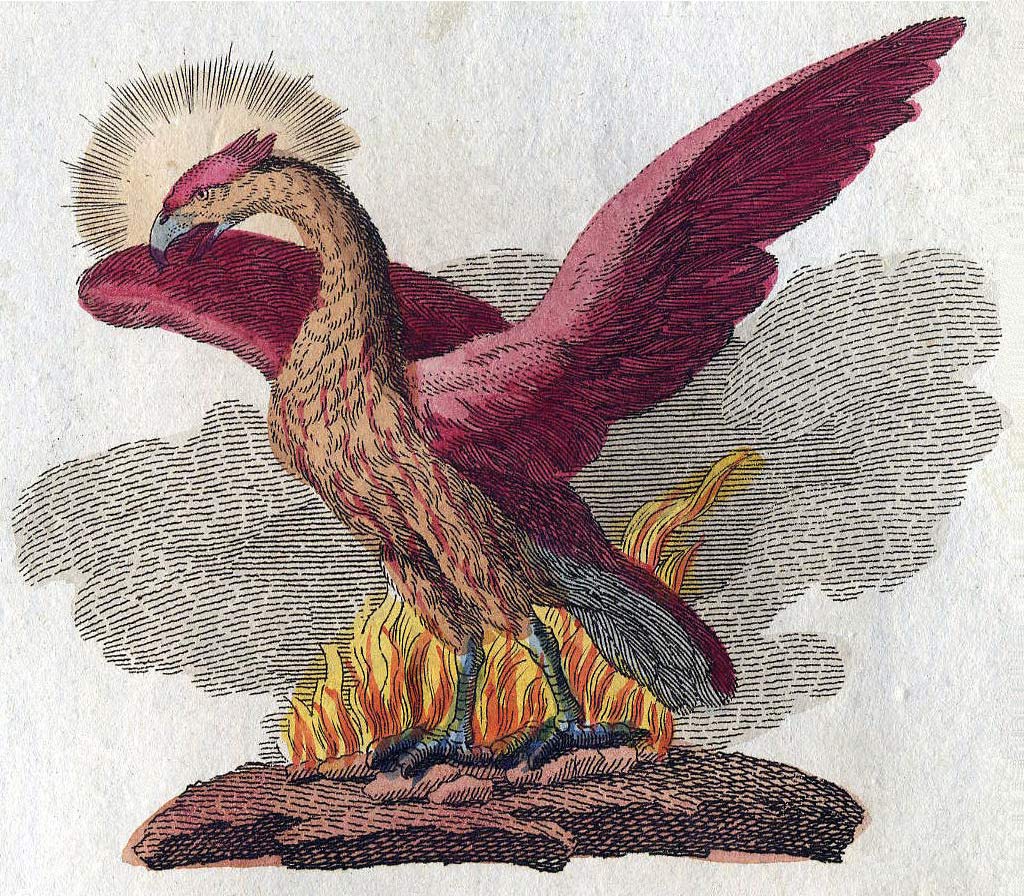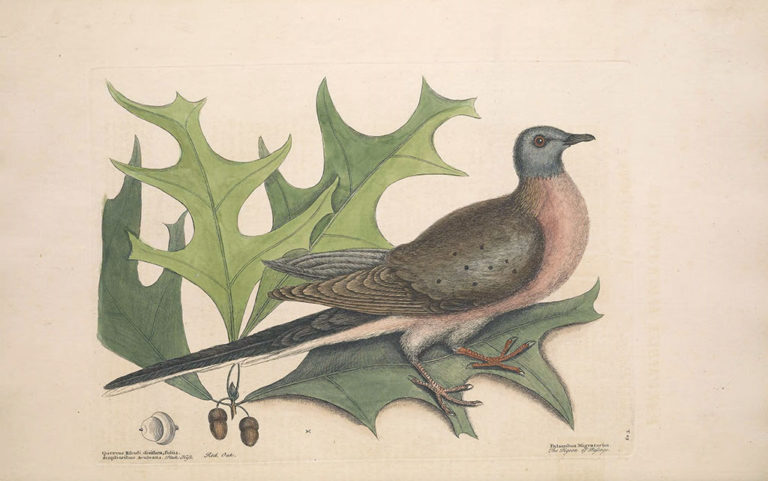[et_pb_section bb_built=”1″ admin_label=”section”][et_pb_row admin_label=”row” background_position=”top_left” background_repeat=”repeat” background_size=”initial”][et_pb_column type=”4_4″][et_pb_text background_position=”top_left” background_repeat=”repeat” background_size=”initial” _builder_version=”3.0.96″ background_layout=”light”]

What if I told you that the there once was a population so vast and mighty that its members could block out the sun.
A combined power so great it could shape the continent. These creatures were not the dinosaurs of the Jurassic period or Roman soldiers two millennia past, but the Passenger Pigeon. A North American bird whose extinction came just a hundred years ago. Two years ago, 2014, was the one hundred year anniversary of the death of the last Passenger Pigeon – Martha. She was born and raised in captivity and much of her lifespan was spent being intensely studied. A legacy that has been maintained by the Smithsonian museum, who still display her body. This anniversary has prompted a wave of new study and for the first time in 50 years the Passenger Pigeon has re-entered the public eye. New scholarship into this bird has allowed us to re-evaluate humans’ impact on the species. Martha lived in the early portions of the twentieth century by which time the fate of the Passenger Pigeon was already sealed. The Passenger Pigeon is survived by its two closest relatives, the Band-tailed Pigeon and the Mourning Dove.
Two years ago, 2014, was the one hundred year anniversary of the death of the last Passenger Pigeon, Martha
Rewinding a few hundred years, the Passenger Pigeon is still the most populous creature in North America. These were not solitary birds; they travelled in groups that cannot be called anything but hordes. In massive groups, the Passenger Pigeons were always soaring, searching for sources of food that could sustain their numbers. The area in which the Pigeons live can be divided into two categories, nesting areas and roosting areas. The Passenger Pigeon’s nesting area was focused around what is now New England and the Great Lakes. It was here that the flocks would build nests and procreate, their stays in these areas extended. Roosting areas on the other hand are places where pigeons would stay for as little as a single night before moving on to another food source. Roosting area makes up the bulk of their living range. The expanse of their habitat, as mapped by Arlie Schorger, extended all the way to the American Midwest, longitudinally extending from the Southern points of the US (Florida swamps excluded) and almost as north as Hudson’s Bay in Canada creating a warped rectangle that takes up almost half the continent’s mainland. Their range so great and numbers so large, the Passenger Pigeon is believed to have played a major part in the shaping of the continent’s forests.
The Passenger Pigeon is believed to have played a major part in the shaping of the continent’s forests.
Though we have no data related to the exact size of Passenger Pigeon flocks, estimates claim the largest populations were up to 100 million individuals, while the smallest groups were merely hundreds of thousands. The massive scale of these populations require immense amounts of food. Staples of the Passenger Pigeons’ diet were beechnuts, seeds, and the acorns from oak trees; in the later months their diet was supplemented with worms and insects. Oak trees can be roughly divided into groups; red and white. The species that belong to the Red Oak family produce seeds that do not germinate until they have experienced a minimum of three months of subzero weather. This means that they do not begin to grow until after the winter months. White oak acorns, on the other hand, germinate in the fall and are already established by the spring. Flocks of Passenger Pigeons would migrate into their nesting areas in the spring months. The Red Oak acorns, just beginning to grow or not growing yet, were fair game for the pigeons. The White Oak acorns on the other hand germinated some months earlier and the saplings were safe from hungry pigeons. In this way the Passenger Pigeon aided in the dominance of White Oak trees in the deciduous forests of eastern North America. Since their extinction the numbers of Red and White oak trees have become much more balanced.
There is more that we can learn about the relationship between the Passenger Pigeon and the environment. Think of the huge swaths of land that the Passenger Pigeon travels to find food for an entire flock. Think of birds nesting or roosting – as many as could fit in a tree – for one day, one week, one month. Schorger once described seeing pigeons roosting on top of other pigeons! The amount of birds perching, landing, and pushing off of trees resulted in snapped branches. Wherever they went Passenger Pigeons left traces of petty destruction. While a few snapped branches may not seem important to us, think about the ecosystem of a forest. The plants and animals on the forest floor have adapted to low light conditions (a forest’s canopy blocks out much of the sun). It is difficult to know how and to what extent this change in sunlight affected the forests of North America, but it is certain that there was an effect. Another thing to consider is the amount of Pigeon droppings left in their wake. If we complain about the droppings of seagulls and common pigeons now, who knows what we would say if a swarm of Passenger Pigeons passed over our town… Continuing on the fecal matter plays an important role in forest composition in two ways.
Wherever they went, Passenger Pigeons left traces of petty destruction
In some areas excrement would be deep enough to block out sunlight, killing vegetation. The areas repeatedly used as roosts would experience this. In lesser used areas, the droppings would change the chemical composition of the soil, dictating which plants could grow on the forest floor. The droppings also acted as kindling, increasing the rate and severity of forest fires in the areas they they frequently roosted. But after the fire is finished, the remaining feces take on a new role as a fertilizer, allowing the forest to regrow. In this way the relationship between the Passenger Pigeon and its habitat is very strange, and strained. Their presence causes the destruction of habitat immediately and in the future, but the pigeons also support their forests, and feed it.

It is difficult to imagine that an animal so numerous could be made extinct in just a century. When the 17th century turned to the 18th, the continental population of the Passenger Pigeon was estimated between 3 to 5 billion. There are numerous reasons that the Passenger Pigeon went extinct but only one cause: humans. Two of the most important factors were hunting and dwindling habitat. Pigeons were hunted for commerce as well as sport. An inexpensive source of meat and feathers, Pigeons were hunted with guns, but more commonly nets and pots of sulfur (to knock birds out en masse). In the early days of pigeon hunting they were still so plentiful that you could fire a gun upwards and a half dozen pigeons would fall from the sky. Similar to pelts and skins in Canada, the Passenger Pigeon was a major industry in the United States. Due to this fact, the species has been preserved in the cultural history of the eastern United States: from recipes in 19th century cookbooks, to posters advertising pigeon hunting competitions, to the diary entries of nineteenth-century Americans. Now just ghosts.
The Passenger Pigeon was also hunted by the indigenous people of North America. The Pigeon has found a place in the mythology of two different Iroquois cultural groups, the Seneca and the Wyandot. Both of these groups were farmers who subsidized their diet with hunting and fishing. So although they did hunt the Passenger Pigeon their hunting represented a smaller portion of their overall diet and was on a smaller scale doing no lasting damage to pigeon populations.
Each tree chopped down by humans represents a single log. One unit of lumber. But to the Passenger Pigeon each tree was housing for numerous growing families, each tree a residence building.
The second main reason for the Passenger Pigeon’s death is destruction of habitat. Colonists needed both lumber and land for farming. This resulted in a toll on the forests of North America. The proportion of lumber taken by colonists in the 1800s is relatively little when compared with the total amount of forest in the Eastern United States (where if you recall, the Pigeons nested). These birds did not nest one or two families to a tree. Each tree in a flock’s nesting area sagged under the weight of as many birds as it could support. Understanding this helps us to conceive of the value of nesting trees to these birds. Each tree chopped down by humans represents a single log. One unit of lumber. But to the Passenger Pigeon each tree was housing for numerous growing families, each tree a residence building. As we looked at earlier the Passenger Pigeon has a complex relationship with their environment. This relationship certainly did not need the meddling of humans.
Though new research has come to light which relieves humans of some of the burden of extinction. Researcher Chih-Ming Hung and his research team believe that the population of this species was subject to large fluctuations. Their work acknowledges that the three billion estimated population is possible though would account only for a recent ‘break out’ of the species. One factor contributing to these population swings is the carrying capacity of North American deciduous forests. Acorn production in oak trees is highly variable and years with scarce acorn production would result in a decrease in Passenger Pigeon population until a year with a bumper crop of acorns. Following the outbreak of pigeons is a natural population decrease, which combined with human action lead to their extinction.
The most important lesson we can learn from the history of the Passenger Pigeon is that it is not necessary to kill off the last two members of a species to have killed off that species. So it is that the last Passenger Pigeon flocks, including Martha, were alive even when the species itself was effectively dead.
We know a surprising amount about the life of Martha. Close to the end of the nineteenth century, Passenger Pigeons were already scarce; monuments cite the last known pigeon in certain areas to be dead by 1899. In response some ornithologists and zoos began keeping flocks of the birds. Three distinct populations were maintained in Milwaukee, Chicago and Cincinnati. The population in Milwaukee was kept by a man named David Whittaker. The collection in Cincinnati was kept by the zoologist Charles Otis Whitman, a small population of twelve birds all descended from the same parents. These birds were obtained by Whitman from Whittaker. In the early years of the twentieth century Whitman worked with the Cincinnati zoo trying to breed more passenger pigeons. The cooperative effort was successful to some small degree but after a couple years the captive pigeons stopped breeding.
The early portions of Martha’s life remain a mystery as it is unclear from exactly which stock she came. However, in 1902, Whitman donated a female pigeon to the Cincinnati zoo and it is considered most likely that this is where she came from. Martha the last Passenger Pigeon died in 1914 and accounts of her death are just as confusing as those of her birth. Multiple people claim to have been the first to find her dead each claiming a different time of day and cause of death.
However it was that Martha passed, with her passed the lineage of the Passenger Pigeon. In a piece written for the anniversary of Martha’s death, the Cincinnati Zoo claims that the extinction of the Passenger Pigeon is the first time in history that humans have played an unquestionable role in the extinction of a species, a claim the megafauna of Australia might like to refute. In North America, however, the Passenger Pigeon now stands as a reminder that the consequences of human action are shared by all creatures.

Great article on the devastating loss of this bird.